This Christmas, in a year marked by conflict in many parts of the world, the Queensland Eye Institute celebrates its international colleagues, who support its research, education and clinical care.
These partnerships are important for sharing expertise from around the world. They ensure QEI can deliver state of the art eye care to people here in Queensland and our region.
Breakthroughs in treating eye conditions like glaucoma and macular degeneration rarely happen in one laboratory. They take a team effort, and a sharing of information, skills and ideas. QEI’s involvement in shared projects ensures all Queenslanders will benefit from scientific breakthroughs when they happen, wherever that might be.
All QEI clinicians have trained at world renowned eye centres overseas. They continue to draw on those relationships for the benefit of Queensland’s future eye health specialists and patients.
QEI’s clinical trials for new therapies are all part of international efforts to prevent blindness and restore sight.
As 2023 draws to a close, the Queensland Eye Institute Foundation extends sincere thanks to donors for their generosity and hopes for continued support. Donations to the Queensland Eye Institute Foundation form part of a global effort to combat eye disease, a worthy battle for the benefit of all Australians.
Science knows no borders
Professor Graham Holder from the National University of Singapore, previously from Moorfields Eye Hospital (London), visited the Queensland Eye Institute twice in 2023. Prof Holder spent time with Dr Sanket Vakil, QEI’s Visual Electrophysiologist and Clinical Researcher. He also delivered lectures to local ophthalmic trainees and shared his expertise with Queensland’s retinal specialists. The world leader came to Brisbane at the invitation of QEI’s Assoc Professor Anthony Kwan, who did his advanced training with Prof Holder in London.
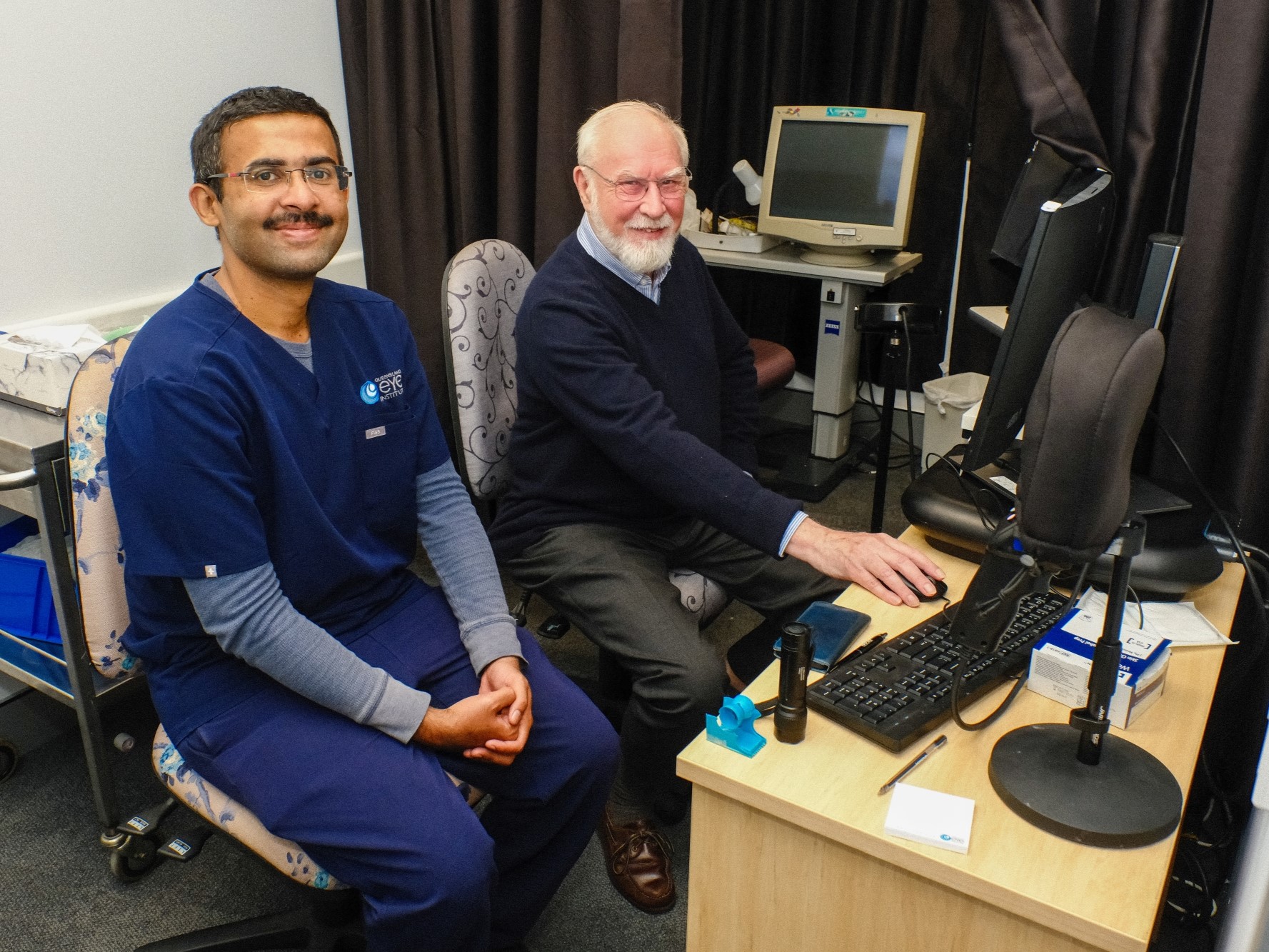
QEI’s Executive Director and CEO, Prof. Mark Radford, travelled to Kuala Lumpur for the first in-person meeting of the Asia-Pacific Academy of Ophthalmology since the pandemic. With a theme of “Reconnect and Collaborate”, the congress brought together more than 4000 delegates from 78 countries to discuss the latest developments in eye research and clinical care.
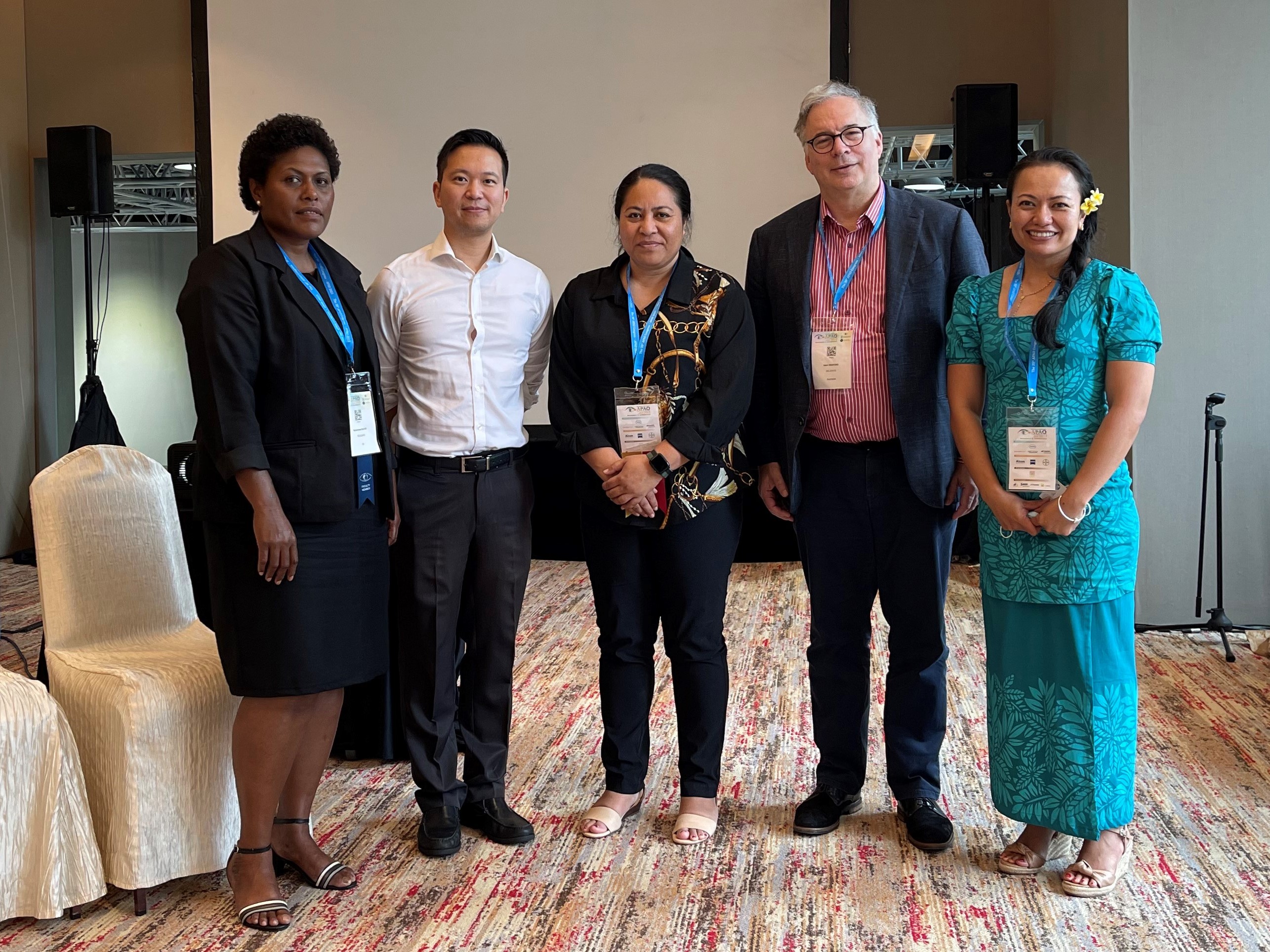
QEI’s Dr Alexandra Manta (R) shared her oculoplastic expertise with Romanian colleagues, demonstrating advanced surgical techniques to the research team. Dr Manta taught Asst Prof Florina Vultur to perform tarsal plate harvesting, supporting our joint research projects investigating human tissue and its role in novel therapeutic strategies.
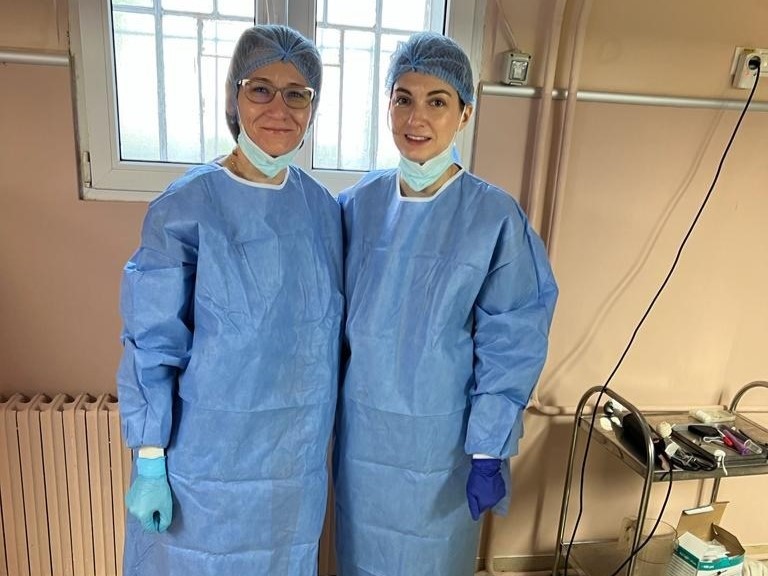
QEI hosted Dr Rob Henderson of Great Ormond Street Hospital and Moorfields Eye Hospital in the United Kingdom. Dr Henderson spoke to Queensland ophthalmology trainees about his work on paediatric retinal gene therapy at the invitation of QEI’s Assoc Prof Anthony Kwan.
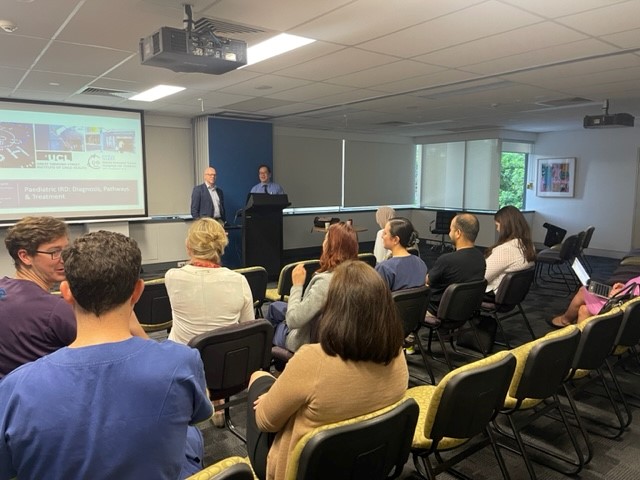
QEI’s Dr David Gunn shared his expertise in CAIRS (Corneal Allogenic Intrastromal Ring Segment) surgery at the European Society of Cataract and Refractive Surgeons meeting in Vienna. Under Dr Gunn’s leadership, QEI’s cornea team pioneered the first CAIRS surgery in Australia to treat keratoconus, a condition suffered by one in 84 Australians.
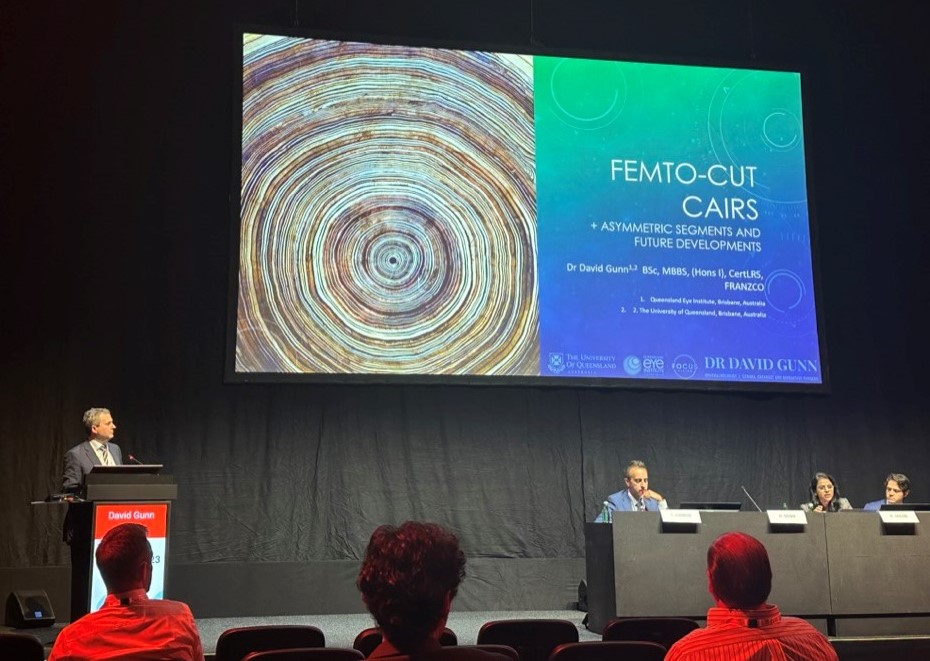
QEI’s Professors Mark Radford and Traian Chirila travelled to Romania to review progress on research projects at the University of Medicine, Pharmacy, Science and Technology “G.E. Palade” of Târgu Mureș (UMFST). The visit by QEI researchers further strengthened the relationship between USMFT and QEI and allowed the multi-disciplinary research team to plan its next steps.
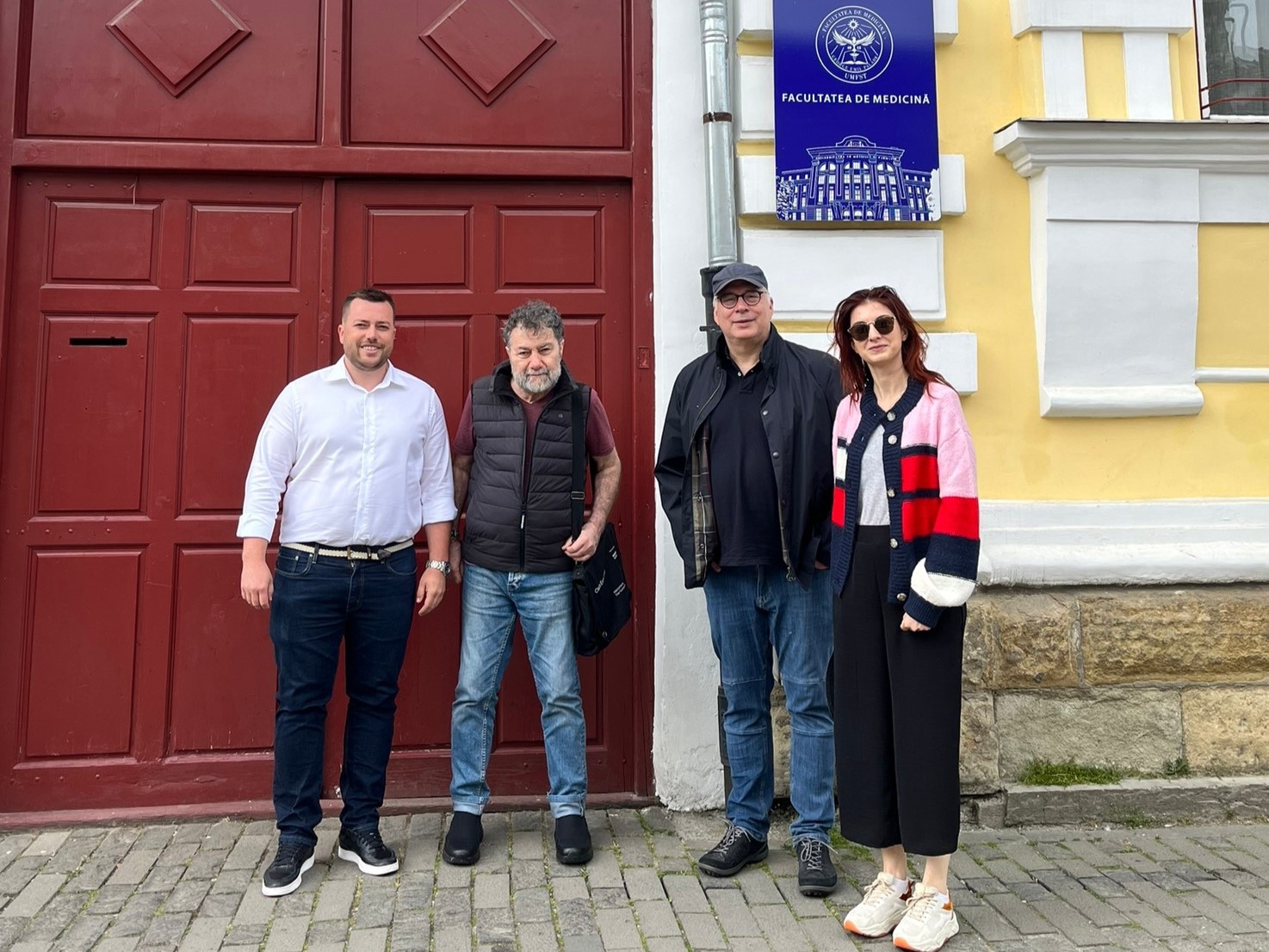
Supporting QEI Foundation
Queensland Eye Institute Foundation is Queensland’s largest independent academic research institute devoted to eye-related health and diseases. With your help, we can work towards new treatments and cures. At QEIF our mission is to reduce eye disease, improve eye health, and ultimately eliminate preventable blindness in the community. With no government funding, QEIF’s survival relies solely on the generosity of you and the community.